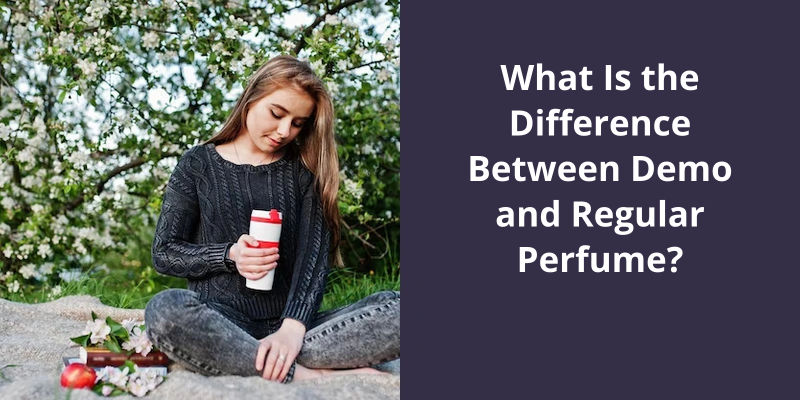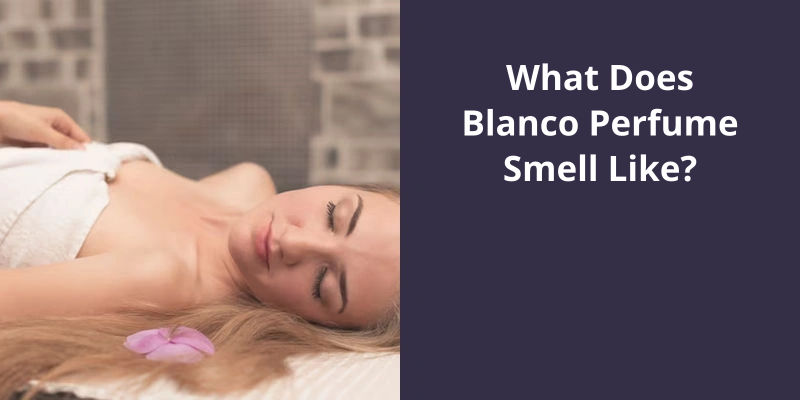The difference between demo and regular perfume lies primarily in their packaging and intended use. Demo perfumes, also known as testers, are typically used in stores for customers to sample the scent. They usually come in plain boxes, sometimes without a cap, and may have the word ‘tester’ or ‘demonstration’ written on the bottle. On the other hand, regular perfumes are packaged for retail sale, often in decorative boxes with all the branding and additional accessories like a cap. However, the fragrance in both types, demo and regular, is the same. Therefore, if you’re not concerned with the fancy packaging, purchasing a demo perfume could save you some money while providing the same quality scent.

What Is the Difference Between Unboxed and Tester Perfume?
While unboxed perfumes refer to the fragrances that are presented without the packaging, including the box, wrapping, and sometimes even the lid. These fragrances could have been opened, tested, or returned by customers to the retailer, which is why they can be sold at a discounted price. However, the fragrance itself is still the same as the original one.
One of the main differences between the two versions is the presentation. While unboxed perfumes may lack the box, testers will usually feature a “tester” or “not for resale” sign on the packaging. This sign serves as an indication to customers that the fragrance isn’t meant to be sold in a retail store, but instead as a sample for testing purposes.
Another difference is the price. Since testers are usually packaged and labeled for promotional purposes, they maintain a slightly higher value. However, both versions can offer significant savings when compared to the shelf price of the original fragrance.
Ultimately, the decision to purchase one version over the other should be guided by personal preference and the cost savings that each represents.
Advantages and Disadvantages of Buying Unboxed Perfume
Unboxed perfumes are bottles of fragrances that don’t come with their original packaging. One advantage of buying unboxed perfumes is that they’re often less expensive than boxed perfumes. However, unboxed perfumes are often less desirable as gifts and can be more difficult to store and transport. Additionally, some unboxed perfumes may have slight imperfections due to being handled or displayed.
Now that we’ve a basic understanding of what a demonstration perfume is, let’s take a closer look at how these samples can benefit both the fragrance industry and consumers.
What Is a Demonstration Perfume?
Demonstration perfumes are an excellent way for customers to try out new fragrances before making a purchase. Manufacturers and retailers usually hand out these small promotional samples for free, as part of a marketing strategy to entice consumers and generate interest in their products. Although they may contain only a small amount of actual perfume fluid, demonstration samples can be a powerful tool for building brand recognition and customer loyalty.
This is particularly relevant in the fragrance industry, where personal preferences can be highly subjective and complex. This can help increase sales, reduce returns, and empower consumers by giving them more control over their purchases.
For example, a brand may offer free samples of a new fragrance to customers who purchase other products from the same line. This can help generate buzz about the new product and create a sense of excitement and anticipation among consumers. It can also help build brand loyalty, as customers may feel more invested in the brand if they’ve already tried and enjoyed one of it’s offerings.
They allow customers to try out different scents and make informed purchasing decisions, while also helping brands build recognition, loyalty, and sales.
The History of Demonstration Perfumes and How They Have Evolved Over Time.
This article will explore the evolution of demonstration perfumes throughout history and how they’ve changed over time.
The world of fragrance can be overwhelming, with a wide range of scents to choose from. But, when shopping for a new fragrance, you may come across a “tester” option. So, what exactly does it mean if a fragrance is a tester? Let’s explore.
What Does It Mean if a Fragrance Is a Tester?
The purpose of creating tester fragrances is to allow potential customers to sample and test the scent before committing to a full bottle purchase. It’s also an effective way for retailers to showcase new or popular scents without having to constantly restock full bottles.
One important thing to note is that tester fragrances typically come in larger sizes than regular retail bottles. This is because testers are made for the purpose of spritzing multiple times and providing an ample amount of fragrance for the wearer to get a true sense of the scent.
While some people may perceive tester fragrances as “hand-me-downs” or lower quality than their fully packaged counterparts, this isn’t necessarily the case. Tester fragrances are made with the same formulation and ingredients as the retail versions, so the scent isn’t compromised in any way.
Another benefit of purchasing a tester fragrance is that they’re typically sold at a lower price point than their retail counterparts. This can be a great option for those who want to try out a high-end or niche fragrance but don’t want to commit to the full price tag.
Just be sure to check the sellers reputation and ensure that you’re getting an authentic tester fragrance before making a purchase.
Differences Between Tester Fragrances and Retail Fragrances in Terms of Packaging and Presentation.
- Tester fragrances usually come in plain or simple packaging, while retail fragrances have more elaborate and attractive packaging to attract customers.
- Tester fragrances often come in unbranded or generic bottles, while retail fragrances come in branded bottles with logos and other decorative elements.
- The presentation of tester fragrances is often more basic and utilitarian, with less focus on advertising and branding, while retail fragrances typically have more marketing materials and displays to promote the product.
- Tester fragrances may have less variety in terms of bottle size and packaging options, while retail fragrances have a wider range of choices for consumers to choose from.
- Tester fragrances may be used for quality testing by manufacturers, while retail fragrances are intended for consumer use.
- Tester fragrances may be sold at a lower price point than retail fragrances, as they’re meant to be used for testing purposes instead of for sale to consumers.
However, the lack of packaging and labeling can raise questions about their authenticity. While many unboxed fragrances are legitimate, it’s important to be cautious when purchasing these items from third-party sellers to ensure that you get what you’re paying for. In this article, we’ll explore the benefits and potential risks of buying unboxed perfumes and offer tips for verifying their authenticity.
Are Unboxed Perfumes Authentic?
However, the main difference lies in the packaging. Unboxed perfumes are usually sold without the original packaging, such as the box, decorative wrapping or accompanying literature. They may be sold in a plain box instead. This is because they’re usually considered overstock or excess inventory and have been removed from the original packaging to make them easier to store and sell.
There’s been a lot of controversy surrounding unboxed perfumes and whether or not they’re authentic. In some cases, unscrupulous sellers may pass off counterfeit or knockoff products as genuine when they’re actually not.
It’s worth noting that unboxed perfumes may also be sold at a discounted price compared to their retail counterparts. This is because they don’t have the original packaging and may be considered less desirable. However, it’s important to remember that just because a product is being sold for a discount, it doesn’t necessarily mean it’s fake or counterfeit.
So if youre looking for a way to save some money on designer perfumes, unboxed options may be a great choice for you as long as you’re careful and purchase wisely.
Are There Any Advantages to Buying Unboxed Perfumes?
- Unboxed perfumes tend to be cheaper than boxed ones.
- They can be easier to store, especially if you’ve limited space.
- Unboxed perfumes are also environmentally friendly as they reduce waste and packaging materials.
- Some collectors prefer unboxed perfumes as they believe it makes the fragrance more authentic.
Source: What’s tester / unboxed perfume – andysperfume
When it comes to perfume, there are generally two main types: Eau de Parfum (EDP) and Eau de Toilette (EDT). The former is the strongest and longest-lasting perfume due to it’s high concentration of perfume oil, while the latter contains a lower percentage of perfume oil but still provides a pleasant scent. Both offer a unique sensory experience that can enhance one’s mood and leave a lasting impression on those around them. So, how do you determine which one is right for you? Let’s explore further.
What Are the Two Types of Perfume?
Perfume has been an essential part of human culture for centuries. It’s believed to have originated in ancient Egypt, where it was used in religious ceremonies and as a medicinal remedy. Today, there are numerous types of perfume available on the market, catering to every taste and preference. However, they can broadly be classified into two main categories: Eau de Parfum and Eau de Toilette.
Eau de Parfum (EDP) is the stronger of the two types of perfume. It contains a higher concentration of perfume oil, typically between 15% and 20%. This means that it’s a more intense fragrance that’s longer-lasting than Eau de Toilette. Because of it’s potency, it’s usually more expensive than Eau de Toilette. EDP is ideal for special occasions and for those who prefer a long-lasting fragrance that doesn’t need to be reapplied frequently.
Apart from Eau de Parfum and Eau de Toilette, there are other types of fragrances available, including Eau de Cologne and Eau Fraiche. Eau de Cologne contains a very low concentration of perfume oil, usually 2-5%. It’s a refreshing citrus scent and is often used in summertime.
When choosing a perfume, it’s essential to consider the concentration of perfume oil, as it determines the strength and longevity of the fragrance. The preference for a particular type of perfume is subjective, and it depends on factors such as personal taste, occasion, and weather conditions. Some fragrances can be worn all year round, while others may be more suited to a particular season. Ultimately, the right perfume should be one that makes you feel confident and happy when you wear it and matches your unique personality and style.
How to Choose the Right Perfume for Your Skin Type
- Assess your skin type, whether it’s dry, oily, sensitive, or normal.
- Determine the fragrance family that suits your preferences.
- Test the perfume on your skin to see how it smells and how it interacts with your skin chemistry.
- Consider the occasion and the season when selecting a perfume.
- Keep in mind the longevity and sillage of the perfume.
- Trial perfumes for a few days on your skin before making a purchase.
Conclusion
While retail boxed fragrances offer a full presentation and are typically more expensive, testers come in plain packaging or no box at all, are more affordable, and include additional tester and notes stickers. Additionally, testers may occasionally lack a cap or have missing labels. Ultimately, the choice between the two types of fragrances comes down to personal preference and budget. Regardless of which option you choose, both are still the same high-quality scent that you know and love.





